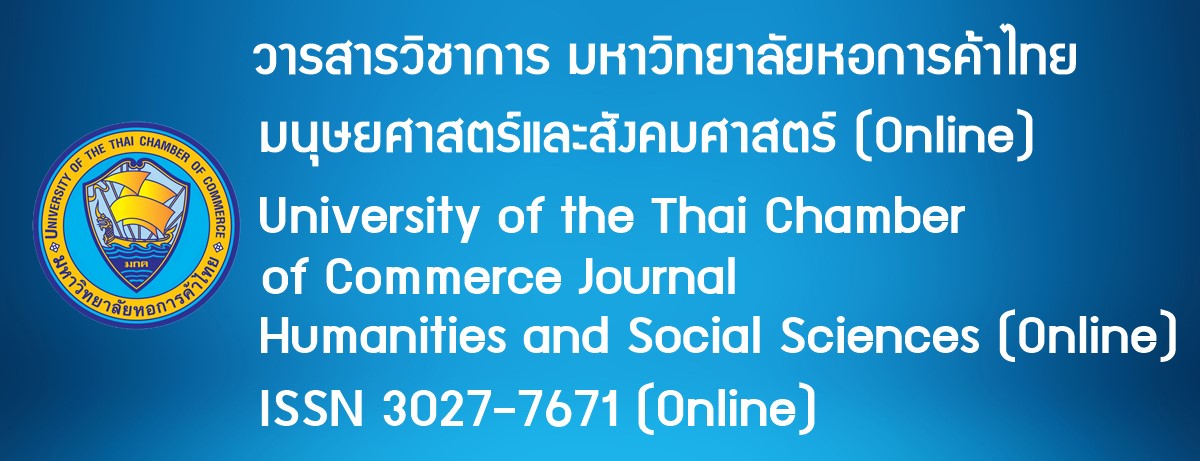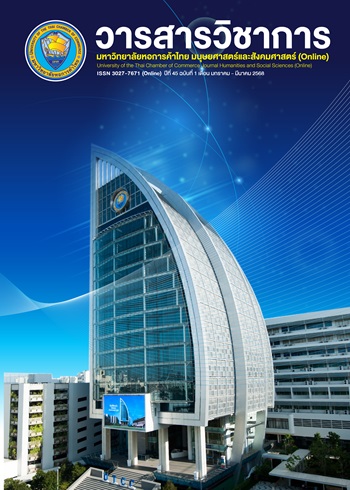การพิจารณาประเด็นการจดสิทธิบัตรซอฟต์แวร์คอมพิวเตอร์ ในประเทศไทย: ศึกษาเปรียบเทียบกับประเทศสหรัฐอเมริกา สหภาพยุโรป ญี่ปุ่น และเกาหลีใต้ สำหรับการพัฒนาเทคโนโลยีปัญญาประดิษฐ์
Main Article Content
บทคัดย่อ
การพิจารณารับจดสิทธิบัตรซอฟต์แวร์หรือโปรแกรมคอมพิวเตอร์นั้นเป็นประเด็นที่ยังคงถกเถียงกันในแวดวงกฎหมายและวิศวกรรมทั่วโลก โดยเฉพาะเมื่อมีการพัฒนาเทคโนโลยีอย่างต่อเนื่อง ซึ่งเทคโนโลยีปัญญาประดิษฐ์ (Artificial Intelligence) การเรียนรู้ของเครื่อง (Machine Learning) การรู้จำเสียงพูด (Speech Recognition) และการประมวลผลภาษาธรรมชาติ (Natural Language Processing) ได้กลายเป็นเทคโนโลยีที่มีการถูกยื่นขอสิทธิบัตรในปริมาณมาก อย่างไรก็ดี เมื่อมีการพัฒนาการใช้งานซอฟต์แวร์ จึงต้องพิจารณากฎหมายว่าด้วยการจดสิทธิบัตรซอฟต์แวร์ในปัจจุบัน โดยบทความนี้วิเคราะห์เรื่องการจดสิทธิบัตรซอฟต์แวร์ในประเทศไทย เปรียบเทียบกับแนวปฏิบัติในสหรัฐอเมริกา สหภาพยุโรป ญี่ปุ่น และเกาหลีใต้ ทั้งนี้ โปรแกรมคอมพิวเตอร์ในประเทศไทยได้รับความคุ้มครองในฐานะงานวรรณกรรมภายใต้พระราชบัญญัติลิขสิทธิ์ พ.ศ. 2537 ซึ่งนิยามว่าเป็น “คำสั่ง ชุดคำสั่ง หรือสิ่งอื่นใดที่นำไปใช้กับเครื่องคอมพิวเตอร์ เพื่อให้เครื่องคอมพิวเตอร์ทำงานหรือเพื่อให้ได้รับผลอย่างหนึ่งอย่างใด ทั้งนี้ ไม่ว่าจะเป็นภาษาโปรแกรมคอมพิวเตอร์ในลักษณะใด” หากแต่พระราชบัญญัติสิทธิบัตร พ.ศ. 2522 ไม่มีการใช้นิยามดังกล่าว เพียงแต่กล่าวถึง “ระบบข้อมูลสำหรับการทำงานของเครื่องคอมพิวเตอร์” ในมาตรา 9 (3) ซึ่งอาจทำให้เกิดการตีความนิยามที่แตกต่างและนำไปใช้อย่างไม่สอดคล้องกันในการพิจารณารับจดสิทธิบัตรซอฟต์แวร์ จึงมีความจำเป็นต้องศึกษาประเด็นสำคัญ กล่าวคือ หลักเกณฑ์ในการจดสิทธิบัตรซอฟต์แวร์ในกฎหมายไทย ผลกระทบของความแตกต่างในนิยามทางกฎหมายต่อการยื่นขอสิทธิบัตรซอฟต์แวร์ และการนำแนวปฏิบัติเรื่องการจดสิทธิบัตรของประเทศอื่นมาใช้กับประเทศไทย เพื่อเสนอแนะให้ประเทศไทยกำหนดนิยามทางกฎหมายที่ชัดเจนยิ่งขึ้น รวมถึงเกณฑ์การพิจารณาในทางปฏิบัติเพื่อส่งเสริมนวัตกรรมและปกป้องเทคโนโลยีใหม่ ๆ อย่างเทคโนโลยีปัญญาประดิษฐ์ได้ดียิ่งขึ้น
Article Details

อนุญาตภายใต้เงื่อนไข Creative Commons Attribution-NonCommercial-NoDerivatives 4.0 International License.
ลิขสิทธิ์ของบทความ
ผลงานที่ได้รับการตีพิมพ์ถือเป็นลิขสิทธิ์ของมหาวิทยาลัยหอการค้าไทย ห้ามมิให้นำเนื้อหา ทัศนะ หรือข้อคิดเห็นใด ๆ ของผลงานไปทำซ้ำ ดัดแปลง หรือเผยแพร่ ไม่ว่าทั้งหมดหรือบางส่วนโดยไม่ได้รับอนุญาตเป็นลายลักษณ์อักษรจากมหาวิทยาลัยหอการค้าไทยก่อน
เอกสารอ้างอิง
Aita, Y. (2005). Current state and remaining issues of patent protection for computer programs. Jurist, 1303, 138-143.
Copyright Act B.E. 2537. (1994, December 21). Royal Gazette, Volume 111, Section 59a, pp. 1-22.
https://www.ratchakitcha.soc.go.th/DATA/PDF/2537/A/059/1.PDF [in Thai]
Department of Intellectual Property. (2019). Guidelines for examining patent and petty patent applications B.E. 2562. https://www.ipthailand.go.th/images/3534/PATENT/Patent Document.pdf [in Thai]
Dragoni, M. (2021). Software patent eligibility and patentability: An overview of the developments in Japan, Europe and the United States and an analysis of their impact on patenting trends. Stanford (TTLF working papers no. 72). Stanford – Vienna Transatlantic Technology Law Forum. https://law.stanford.edu/wp-content/uploads/2021/01/dragoni_wp72.pdf
Evans, J., Taweepon, S., & Chira-aphakul, H. (2012, June). Software protection in Thailand. https://www.tilleke.com/wp-content/uploads/2012/06/2012_June_Software_Protection_in_Thailand.pdf
Guadamuz, A. (2010, June 3). Patentability of computer software and business methods [Paper presentation]. SCRIPT Centre for IP and Technology Law, University of Edinburgh. https://www.wipo.int/meetings/en/doc_details.jsp?doc_id=135735
Guede, M. A. (2022, October 26). Patent protection for software inventions in Europe. https://www.iam-media.com/guide/innovation-invention-yearbook/2023/article/patent-protection-software-inventions-in-europe
Japan Patent Office. (2015). Part vii foreign language written: Chapter 1 overview of foreign language written application system. In Examination Guidelines for Patent and Utility Model in Japan (Provisional Translation) (pp. 1-11). https://www.jpo.go.jp/e/ system/laws/rule/guideline/patent/tukujitu_kijun/document/index/all_e.pdf
Lee, S. Y., Lee, H. Y., & Kwon, I. A. (n.d.). Patent litigation in South Korea: Overview. Thomsonreuters. https://uk.practicallaw. thomsonreuters.com/w-014-5857?transitionType=Default&contextData=(sc.Default)&firstPage=true
Patent Act B.E. 2522. (1979, March 16). Royal Gazette, Volume 96, Section 35, pp 1-40. https://www.ratchakitcha.soc.go.th /DATA/PDF/2522/A/035/1.PDF [in Thai]
Russavage, E. J. (2023). Software patents in the United States: Essential considerations and important trends. The Journal of Robotics, Artificial Intelligence & Law, 6(1), 45-52. https://454850.fs1.hubspotusercontent-na1.net/hubfs/454850/Software%20Patents%20
Article%20Russavage%20November%202022.pdf
Title 35-Patents. (1952, July 19). https://www.govinfo.gov/content/pkg/USCODE-2011-title35/html/USCODE-2011-title35.htm
Trossel, W. S. (2024, January 15). A guide to protecting AI-related technologies in Thailand. IP Experts. https://www.iplink-asia.com/article-detail.php?id=1087


